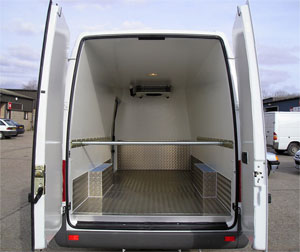Transport Refrigeration Units
Transport refrigeration units are commonplace now more than ever because of the attention given to proper food safety from handling, transport to storage. Refrigerated transport is not only indispensable to the food industry but to pharmaceutical and medical institutions and manufacturing industries as well. These industries have temperature-sensitive materials and goods such as medicines, food products and chemicals that need to be kept at specific temperatures during transport.

What are transport refrigeration units?
Transport refrigeration units refer to refrigeration systems or temperature control systems driven by small diesel engines. Transport refrigeration units are intended for use in a wide array of containers that house perishable goods or temperature-sensitive materials, to maintain the required temperature during transport. These refrigeration units are affixed to various vessels such as rail cars, semi-trailers, shipping containers and truck vans.
Transport refrigeration units are not only capable of keeping the cargo inside the vessel cool, but they also amp up the temperature if necessary to sustain the required condition for the specific cargo during transport. This is especially true in cold climates where the ambient temperature is so low that there is a need to add heat to correct the temperature inside the vessel. It should be noted, though, that transport refrigeration units are not designed to cool down or freeze goods. They serve to maintain the temperature. Thus, most goods should be pre-cooled to the required transport temperature before loading them into the container.
Features of transport refrigeration units
Since these are used at more severe conditions than ordinary refrigeration applications, transport refrigeration units are designed differently. They must be able to function under variable weather conditions like sun, rain and radiation, and differing ambient temperatures. They must be strong enough to withstand severe transport environments such as rough roads and extremely long travels. And of course, they must be able to provide differing temperature requirements for various loads.
History of transport refrigeration units
Before 1938, perishable products such as fresh produce, meat and poultry were transported from the source to retailers through railroads, using only ice to keep the goods cool. Since ice cannot keep the temperature down for long, spoilage was frequent.
In 1938, Joseph Numero, together with his business associate Fred Jones, built what was to become the first transport refrigeration unit. And though it was heavy and awkward having been made form improvised and used components, it was still operational. This was the Model A unit of Thermo King, the newly established company by Joseph Numero, the company president, and Fred Jones, the company vice president.
The company continued to work on improving the original model, until they came up with Model C. This model was far better than model A. It was smaller, lighter, self contained and front-mount. This was what current transport refrigeration units are based on.
Transport refrigeration units have gone a long way from its small beginnings in 1938. They play an important role in modern day supply chain and management. Because of transport refrigeration units, we can enjoy fresh foods, frozen dairy and effective medicines no matter where we are.
